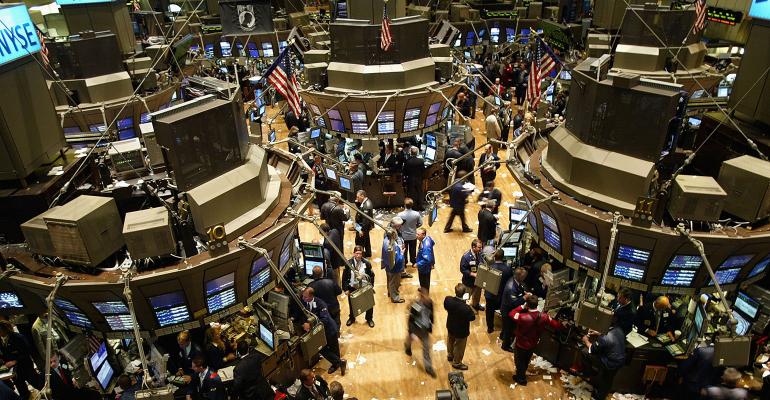By Sid Verma and Luke Kawa
(Bloomberg) --Another year, another setback for conventional wisdom on Wall Street.
Midway through 2017, everything from a weak dollar to raging Treasuries has forced strategists to rethink some of their highest-conviction thoughts on how financial assets would perform.
And while predicting the future is famously difficult, it’s been an especially rough six month’s for Wall Street’s finest. Here’s a look at some of the biggest misses:
Greenback Blues
Nothing was going to stop the dollar. Goldman Sachs Group Inc. said a raging greenback was its top trade of the year -- and it was right for one day. The U.S. currency rose to the highest in at least 12 years on Jan 3. It’s down 6.5 percent since then, and the bulls have thrown in the towel. Goldman capitulated in April.
Everything that could’ve gone wrong here, seems to have done so. U.S. reflation faltered at the same time an uptick in global growth tempered the outperformance of the American economy. The Trump administration signaled a preference for a weaker dollar, and took a trading posture that’s yielded fewer protectionist outcomes than expected. Not even two Federal Reserve rate hikes, and the promise for a third, could bolster it.
On a trade-weighted basis, the dollar is back to pre-U.S. election levels, while the euro is up 6.3 percent -- a far cry from median projections from analysts surveyed by Bloomberg at the beginning of the year.

Treasuries Get Trump Bump
The November election sparked a rout in Treasuries that by December looked like it was just getting started in earnest. That was the view at Bank of America Corp., where the firm’s global head of rates and currencies, David Woo, was warning of further pain for bond bulls once Trump and Congress unleashed “ the mother of all fiscal stimuluses.”
A synchronized global recovery would buoy Treasury yields, the thinking went, with pro-growth fiscal policies in the U.S. adding more fuel to the fire. And the Fed would be there to push interest rates higher. While the central bank’s done its part, the administration has delivered a Trump Bump precisely where no one expected -- in the bond market. There’s been no infrastructure bill, little regulatory rollback and no tax reform.
While other factors have contributed to the bond rally, the lack of meaningful fiscal progress prompted Woo to change his outlook, saying there’s “ limited upside” for Treasury yields until at least September. He’s not alone. Wall Street’s median estimate for what the 10-year Treasury notes will yield is down 30 points since the year started. Even still, consensus still lingers 20 basis points above current pricing.
Core Won’t Soar
Trump was supposed to be the inflation president. So far, his tenure has coincided with a period of deteriorating core price pressures -- prompting Wall Street firms to trim forecasts for the Fed’s preferred gauge of inflation.

Barclays Capital has ratcheted its target down from as high as 2.2 percent in the wake of the U.S. vote to 1.6 percent. Fed Chair Janet Yellen said Wednesday that "one-off" factors like wireless services were weighing on inflation.
Barclays chief U.S. economist Michael Gapen says there’s more to it. He highlighted pockets of deflation in core goods prices due to domestic factors -- such as used cars, apparel and household furnishings -- that would persist for longer than expected and outweigh the inflationary effect of a weaker greenback.
Investors have scaled back bets on higher prices, too. Inflows into the iShares TIPS Bond ETF swelled to a record of nearly $2 billion the month Trump won the presidential election, but have averaged just $90 million per month from March through May.

Emerging Bulls
Markets in developing nations weren’t supposed to fare well in 2017. With EM bears ascendant, foreign portfolio flows turned lower on the heels of Trump’s election amid fears of restrictive trade policies and the prospect of a stronger greenback that would hike financing costs. Deutsche Bank AG, Citigroup Inc, Morgan Stanley and Societe Generale SA late last year sounded the alarm over an oncoming liquidity stress test for emerging markets.
Six months later, bulls are firmly in charge. Firming economic data and capital flows have turbocharged stocks, currencies and bonds from Asia to Latin America, while the S&P 500 Index’s gain is just half that of MSCI’s emerging-market index -- a reversal in the ‘ America first’ trading strategy popularized after Trump’s victory.

Credit Rally
Plenty of market participants banked on excess returns on corporate credit in Europe and the U.S. this year -- they just didn’t expect the rally in spreads on investment-grade and junk bonds alike to tighten this much, after notching double-digit returns in 2016. Tighter financial conditions, the headwinds from record corporate leverage and higher U.S. interest rates were supposed to dampen the rally. They haven’t.

Investors are accepting the lowest pay-out for European junk bonds relative to high-grade peers in a decade, as the economic recovery and low government bond yields spur demand for credit.
“Risk events continue to come and go without leaving any damage on credit and spreads have actually tightened,” analysts at Deutsche Bank AG wrote in a client note June 13. “We certainly didn’t expect it to be as positive as it has been.”

--With assistance from Cecile Gutscher.
To contact the reporters on this story: Sid Verma in London at [email protected] ;Luke Kawa in New York at [email protected] To contact the editors responsible for this story: Jeremy Herron at [email protected] Dave Liedtka





